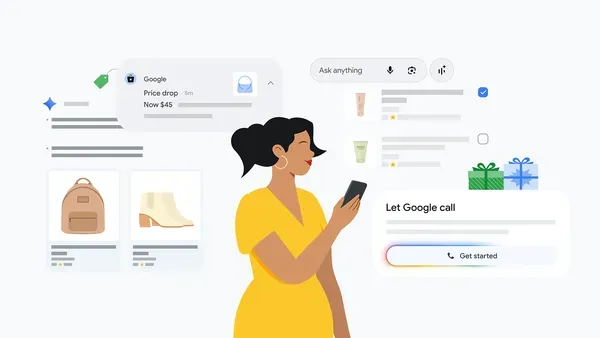Google just dropped the most aggressive AI shopping push yet, rolling out autonomous agents that can call local stores to check inventory and even complete purchases on your behalf. The suite of tools, launching just before Black Friday, transforms how consumers discover and buy products online while giving Google unprecedented control over the $6 trillion global e-commerce market.
Google is rewriting the rules of online shopping with a suite of AI agents that can literally call stores and buy products for you. The company unveiled its most ambitious commerce play yet today, launching conversational shopping tools that turn the traditional browse-and-buy process into something closer to having a personal assistant.
The centerpiece is agentic checkout, where Google can monitor prices and automatically purchase items when they hit your target price. "This is helpful for shoppers, because they don't have to constantly check to see if the item they want is on sale," Lilian Rincon, VP of product management for Google Shopping, told reporters. The system works with major retailers including Wayfair, Chewy, Quince, and select Shopify stores through Google Pay integration.
But the real breakthrough is Google's AI calling feature, built on the company's Duplex technology that made waves in 2018. The system can now call local businesses to check product availability, pricing, and current promotions. After you search for products "near me," you can select "Let Google Call" and the AI handles the rest - walking through questions about your specific needs before reporting back with findings.
"We feel it really shouldn't be so tedious, and shopping should feel - and can feel - a lot more natural and easy," Vidhya Srinivasan, VP and GM of ads and commerce at Google, explained during the press briefing. The company wants to preserve the "fun parts of shopping, like the browsing, like the serendipitous discovery" while eliminating friction.
The tools launch through Google's AI Mode, the conversational search interface that lets users ask questions in natural language. Instead of typing "best winter coats under $200," you can now ask "what are some cozy sweaters in autumn colors?" and get visual results with photos, prices, reviews, and real-time inventory data.
This represents a fundamental shift in how Google approaches e-commerce. Rather than just showing search results and ads, the company is positioning itself as an active participant in transactions. The Shopping Graph that powers these features processes over 50 billion product listings, with 2 billion updated every hour to ensure accuracy.












